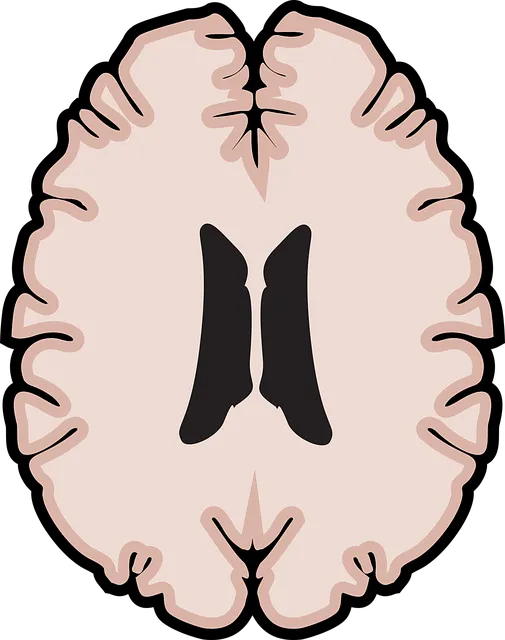Kaiser Castle Rock offers a holistic range of mental wellness programs, accessible via primary care referrals and innovative platforms like podcasts and awareness campaigns. Evaluating these programs involves combining quantitative (outcomes, satisfaction) and qualitative (surveys, interviews) metrics to ensure effectiveness and cultural sensitivity. The integration of participant feedback creates a tailored, responsive system, enhancing services and addressing community needs. A data-driven approach, using SMART KPIs, guides continuous improvement, aligning services with evolving mental health requirements, as demonstrated by Kaiser Castle Rock's model. Understanding this process is key to accessing and optimizing mental health support through Kaiser Castle Rock.
Mental wellness programs within healthcare systems, such as Kaiser Castle Rock, are vital in fostering community well-being. This article explores effective evaluation methods to assess and improve these initiatives. We delve into key metrics, participant feedback, data analysis, and the establishment of KPIs to measure success. Understanding how to gauge the impact of mental health services is essential for organizations aiming to enhance patient care and accessibility, especially when utilizing Kaiser Castle Rock’s resources to provide these services.
- Understanding Kaiser Castle Rock's Mental Wellness Programs
- Evaluating Program Effectiveness: Metrics and Tools
- Participant Feedback and Satisfaction Surveys
- Data Analysis and Interpretation for Continuous Improvement
- Measuring Success: Defining Key Performance Indicators (KPIs) for Mental Health Services
Understanding Kaiser Castle Rock's Mental Wellness Programs

Kaiser Castle Rock offers a comprehensive range of mental wellness programs designed to cater to diverse needs. Their approach is holistic, incorporating various therapeutic modalities and support services to promote overall well-being. Individuals interested in accessing these services can do so through different channels. One common method is by consulting with a primary care physician who can refer patients to specialized mental health professionals within the Kaiser network. This ensures continuity of care and facilitates easier access to necessary treatments.
The organization also utilizes innovative methods like the Mental Wellness Podcast Series Production, which provides accessible information on various mental health topics. Additionally, they engage in Public Awareness Campaigns Development to educate the community about available resources and encourage open conversations around mental wellness. Understanding how to get mental health services through Kaiser Castle Rock is crucial for those seeking support, fostering a culture of positive thinking and proactive care.
Evaluating Program Effectiveness: Metrics and Tools

Evaluating the effectiveness of mental wellness programs is a multifaceted process that requires a mix of quantitative and qualitative metrics. To understand how well these programs, like those offered by Kaiser Castle Rock, are serving their communities, it’s crucial to assess outcomes related to emotional regulation, stress reduction, and improved overall mental health. Metrics such as participant satisfaction, adherence rates, and changes in symptom severity scores from pre- to post-program can provide valuable insights into program effectiveness.
Additionally, tools like surveys, interviews, and focus groups allow for deeper exploration of participants’ experiences. These methods help uncover the impact of programs on individuals’ emotional well-being, cultural sensitivity in mental healthcare practice, and even the adoption of practices like mindfulness meditation. By integrating these diverse evaluation methods, mental wellness programs can not only identify what’s working but also gain valuable feedback to enhance their services and better meet the needs of the communities they serve, such as those seeking mental health services through Kaiser Castle Rock.
Participant Feedback and Satisfaction Surveys

Participant feedback and satisfaction surveys are valuable tools for evaluating mental wellness programs. These surveys provide insights into how participants perceive the services they receive, including the quality of care, accessibility, and overall effectiveness. At Kaiser Castle Rock, for instance, getting mental health services is streamlined through a comprehensive approach that combines evidence-based practices like Compassion Cultivation Practices with robust policy analysis and advocacy to ensure patient needs are met.
By incorporating participant feedback, mental health programs can identify areas for improvement, tailor their services better to the community’s unique needs, and ultimately enhance the overall wellness of those they serve. Moreover, addressing any concerns or suggestions raised through these surveys can help in preventing burnout among healthcare providers, a significant issue within the Mental Health Policy Analysis and Advocacy domain. This continuous feedback loop ensures that mental health initiatives remain relevant, responsive, and accessible to all who require them, ultimately fostering a healthier and more compassionate community.
Data Analysis and Interpretation for Continuous Improvement

Evaluating a mental wellness program involves meticulous data analysis, which serves as a powerful tool for continuous improvement. By examining participant outcomes, engagement rates, and satisfaction levels, programs can identify successful strategies and areas needing refinement. This process encourages adaptability and ensures services, like those offered by Kaiser Castle Rock, align with the evolving needs of individuals seeking mental health support.
Through rigorous analysis, key trends emerge, guiding evidence-based decisions. For instance, tracking improvements in social skills through training programs reveals effective interventions. Similarly, monitoring the adoption and benefits of self-care routines can inform policy advocacy efforts. This data-driven approach promotes a positive cycle of refinement, ensuring mental health services remain accessible and impactful, addressing not just symptoms but fostering holistic well-being.
Measuring Success: Defining Key Performance Indicators (KPIs) for Mental Health Services

Evaluating mental wellness programs requires a strategic approach to measure success and impact. One crucial aspect is defining Key Performance Indicators (KPIs) that align with the goals of the services provided, such as those offered by Kaiser Castle Rock. These KPIs should be specific, measurable, achievable, relevant, and time-bound (SMART). For mental health services, potential KPIs could include reductions in symptoms of anxiety or depression, increased client engagement in therapy, improvements in coping strategies, enhanced satisfaction levels among participants, and decreases in emergency room visits related to mental health crises.
For instance, if the program focuses on crisis intervention and inner strength development (Crisis Intervention Guidance), KPIs might track the number of clients who successfully complete the program and report improved ability to manage stress or the proportion of individuals who reduce their reliance on emergency services for mental health support. Similarly, for burnout prevention strategies targeted at healthcare providers (Burnout Prevention Strategies for Healthcare Providers), KPIs could measure staff retention rates, job satisfaction levels, and reductions in reported stress levels over time.
Evaluating mental wellness programs is essential to ensure their effectiveness and impact on individuals’ well-being. By combining quantitative data from metrics and tools with qualitative insights from participant feedback, Kaiser Castle Rock can continuously improve its offerings. This comprehensive approach allows the organization to measure success through defined Key Performance Indicators (KPIs), ultimately enhancing how to get mental health services for those in need within their community. Through these methods, they can ensure their programs are tailored to meet the unique needs of their population, fostering better mental wellness outcomes.






